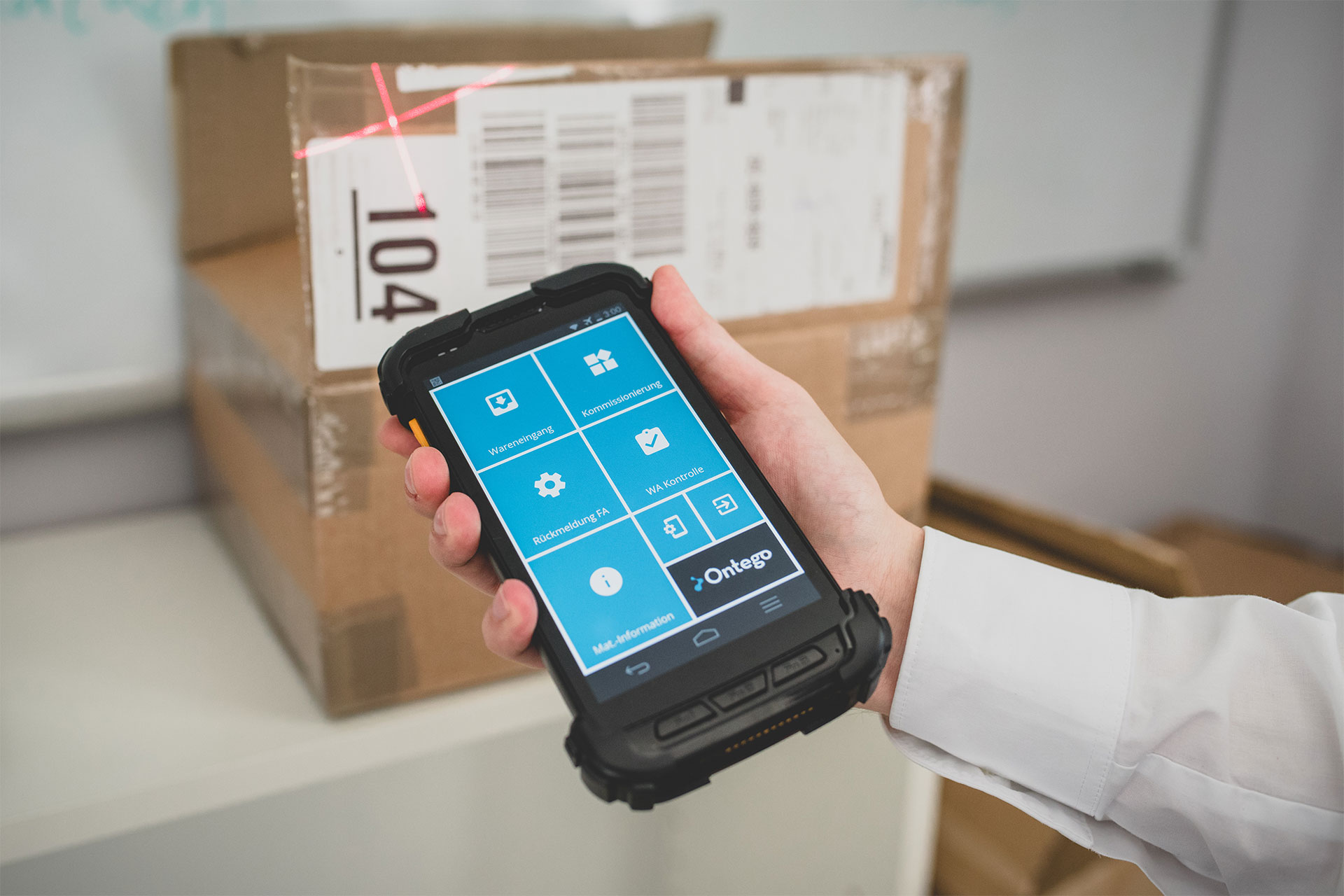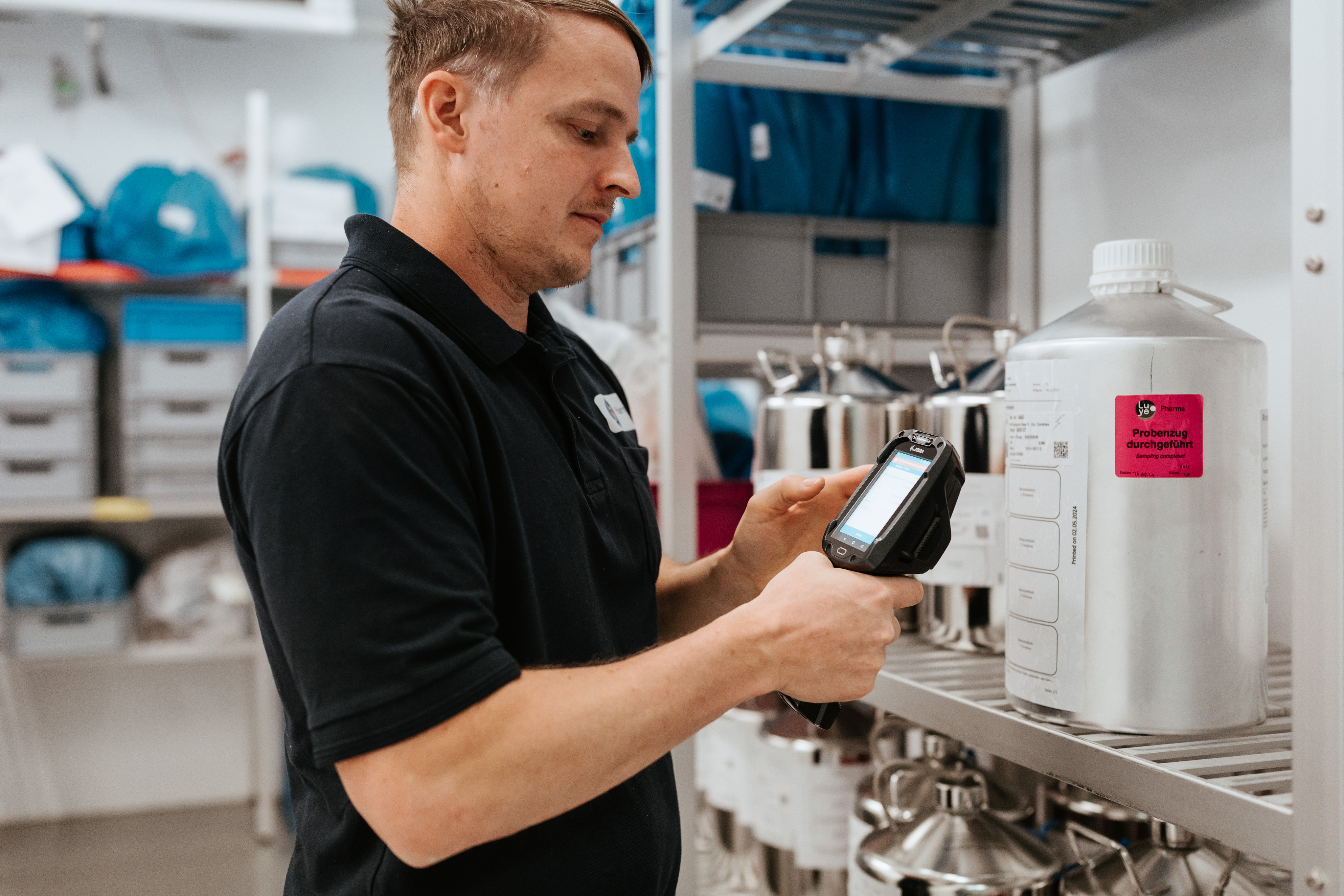Topics
In SAP logistics, practicality often takes precedence over user-friendliness. This principle frequently applies to MDE solutions as well when they are based on SAP standard technologies such as ITSmobile, SAP Console, or the RF framework. Yet, especially in the SAP environment, modern, user-friendly software solutions for mobile data collection in warehouse and production operations are absolutely possible.
User-Friendly Logistics Apps for SAP are Possible
Successful apps in the private sector often owe their success—meaning widespread adoption—precisely to good “user experience,” which provides users with a positive overall impression during operation.
This positive experience includes:
- The fundamental functionality of an app,
- An appealing design, and
- A well-thought-out user guidance.
Today, in the world of industrial handheld scanners and forklift terminals, Android has taken a leading role as the mobile operating system. On this basis, it is now possible to transfer proven design principles and application logic to SAP logistics apps.

Excursus: User-oriented App Design
User experience designer Erik Kennedy observed how significant it is for humans when interfaces on screens appear three-dimensional and tangible. This insight shaped Apple's design trend in the early 2000s, which was later followed by the radical shift toward “flat design.”
But the world is not flat. A healthy dose of haptics is important for our brain so that we genuinely want to operate something. After Apple, Microsoft and Google also recognized this. The latter adopted “Material Design,” using metaphors of real materials on screen (light paper, sturdy cardboard, etc.).
As a result, today we see subtly raised and shaded buttons, slightly animated fields, and color highlights depending on context. Sometimes barely visible to the user, but always noticeable due to their subtlety.
Since I started developing business software, I have always believed that design must begin with the user.
— Hasso Plattner
What is Important in Mobile Applications?
The core challenge remains the significantly limited screen space on mobile devices compared to desktop screens. This has several implications for developing mobile logistics apps:
- Reduce input fields and buttons to the essentials
- Keep practical processes in focus
- Guide and support users consistently
The goal should be to make employees’ mobile workflows as rational and pleasant as possible through software-based assistance. Especially in mobile processes, applications are often designed to be highly targeted. For example, simplified picking in SAP order picking or intelligent user guidance through complex service reports can provide real, practical support for warehouse workers.

Why Invest in App Interfaces?
Mobile software is a key tool for many employees. And these employees often use apps with sophisticated design in their private lives. Even SAP refers to the demanding Generation Y, which equates good software with good interfaces.
- User-friendly interfaces are a prerequisite for intuitive apps.
- Intuitive apps can be used without training.
- Guided app processes prevent incorrect operation and follow-up costs.
- Intelligent input assistance improves data quality.

The 5 Core Aspects of User-Friendly SAP Apps in Logistics
There are five key points that should be considered in the context of an MDE solution:
- Special interfaces for rugged devices
The thumb is further away on a heavy industrial device than on a consumer smartphone. Gloves make swipe gestures difficult, so alternative interaction concepts are needed. - Enable operation via touch or keyboard
In a warehouse environment, using a physical keyboard can still be practical. Therefore, interaction concepts should consider different usage scenarios from the outset. - Fully integrate hardware and peripherals
Barcode scanning is an integral part of MDE solutions in SAP logistics. A mobile application should seamlessly support scanning and capturing other data such as RFID, NFC, or camera images. The same applies to integrating mobile third-party devices such as printers. - Consider form factors of different devices
The promise of “one user interface for all devices” sounds appealing, but in logistics practice it only applies to a limited extent. Every mobile application ultimately aims to achieve optimal results for its intended mobile device. A solution may therefore display different information on a 5-inch handheld than on a 12-inch forklift terminal. Still, responsive interfaces must ensure hardware independence within a device class that provides investment security for the company. - Develop once and reuse repeatedly
The rollout capability of mobile SAP applications should be considered during app development. Even if processes differ slightly from plant to plant, they should be taken into account to achieve optimal results. What matters is the easy adaptability of the mobile scanner solution.
Conclusion
In SAP logistics, the focus is often primarily on basic data entry via mobile devices based on standard processes with modern interfaces and optimized mobile user guidance falling behind. This is unfortunate because significant potential remains untapped. Mobile apps can unlock this potential by supporting warehouse workers with intelligent user guidance, control mechanisms, and input assistance. This improves data quality and prevents incorrect notifications and unnecessary follow-up costs.

Optimize your warehouse effortlessly and cost-effectively with the Ontego subscription model.


.webp)

